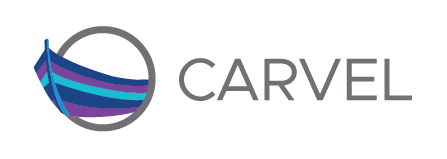The Carvel Tool Suite website carvel.dev
- Go >=1.13
- Make
- vendir installed from carvel.dev
We rely on multiple tools from the Carvel Tool Suite and this repository contains
configuration needed to download these tools.
In order to do this we use vendir to retrieve the binaries as well as some configurations.
For more information on vendir check carvel website
The configuration for the application can be found in the folder config
Interesting files:
schema.yml: definition of the types that the data values can have Schemas serve as defaults in case no values are provided#@schema/nullableannotation defines the next element as nullable, so it can be provided or not in the data valueshelpers.star: Starlark file with helper functions definition used incrds.ymlandprojects.yml
Lets create a file with the following data values configuration
#@ load("@ytt:overlay", "overlay")
#@data/values
---
projects:
#@overlay/append
- name: "first-project"
namespace: "default"
#@overlay/append
- name: "second-project"
namespace: "other-namespace"
#@overlay/append
- name: "third-project"
namespace: "default"
description: "some very nice project"This is for tests purposes to ensure that when we provide the expected information the configuration is generated correctly.
To test out our configuration we use the following command
bin/ytt -f deployment/config -f tmp/data.yml --enable-experiment-schema
Explanation of the arguments:
-f config: folder whereyttwill retrieve the configuration-f tmp/values.yml: file with the above information--enable-experiment-schema: Enable the Schema feature(we still haven't made schemas a default behavior ofytt)
For more information on ytt check carvel website
To create the OCI Images needed for our application we use kbld
bin/kbld -f build.docker.hub.yml -f deployment/config/app.yml --imgpkg-lock-output tmp/images.yml
Explanation of the arguments:
-f build.docker.hub.yml: configuration file for kbld to build current sourcebuild.pack.ymlcan also be used if we want to build source usingpack-f config/app.yml: file that contains the deployment information. This is important becausekbldwill only build images that are used.--imgpkg-lock-output tmp/images.yml: This is not mandatory, but creates an image lock file that will be used on our next step to create a bundle usingimgpkg
For more information on kbld check carvel website
This section will describe how might a developer prepare an application to be distributed
Using imgpkg the developer can create a bundle with all the needed OCI images with the software
as well as the configuration that will be needed to use the software.
In this case we need to package the image that we just built plus our config folder.
This is done by executing the following commands
-
Create the bundle structure
mkdir -p bundle/.imgpkg && cp tmp/images.yml bundle/.imgpkg/images.yml -
Run
imgpkgbin/imgpkg push -b k8slt/projects-bundle:v1 -f bundle -f deploymentbin/imgpkg push -b gcr.io/cf-k8s-lifecycle-tooling-klt/projects-bundle:v1 -f bundle -f deploymentExplanation of the arguments:
-b k8slt/projects-bundle:v1: Repository where our bundle will be uploaded to-f bundle -f deployment: there 2 folders contain the deployment files as well as the bundle configuration
For more information on imgpkg check carvel website
For the consumers of the application the developer will have to provide the image repository and,
the SHA of the bundle in the above case it will be k8slt/projects-bundle@sha256:77c7e2dd9293499a2a1f11fbba5cd57f36e11281c5fc6fd10d316b8824df70d7
Since everything was package using Carvel Tool the consumer will have to download imgpkg and for this particular
application will also need vendir to manage other dependencies
This step is optional but usually recommend.
This is done by executing the following command
bin/imgpkg copy -b k8slt/projects-bundle@sha256:77c7e2dd9293499a2a1f11fbba5cd57f36e11281c5fc6fd10d316b8824df70d7 --to-repo localhost:5000/projects-bundle-to-deploy
bin/imgpkg copy -b gcr.io/cf-k8s-lifecycle-tooling-klt/projects-bundle@sha256:77c7e2dd9293499a2a1f11fbba5cd57f36e11281c5fc6fd10d316b8824df70d7 --to-repo localhost:5000/projects-bundle-to-deploy
Explanation of the arguments:
-b k8slt/projects-bundle@sha256:77c7e2dd9293499a2a1f11fbba5cd57f36e11281c5fc6fd10d316b8824df70d7: Exact version of the software we want to run--to-repo localhost:5000/projects-bundle-to-deploy: local repository
Interesting things to note:
- All the images are copied to the same repository
- The copy is done using the SHA
imgpkgensures that SHA will never change
What steps need to be done to customize and prepare to deploy the application
-
Retrieve the configuration for the app This is done by executing the following command
bin/imgpkg pull -b localhost:5000/projects-bundle-to-deploy@sha256:77c7e2dd9293499a2a1f11fbba5cd57f36e11281c5fc6fd10d316b8824df70d7 -o tmp/projects-bundleExplanation of the arguments:-b localhost:5000/projects-bundle-to-deploy@sha256:77c7e2dd9293499a2a1f11fbba5cd57f36e11281c5fc6fd10d316b8824df70d7: Exact version of the software we want to run-o tmp/projects-bundle: location where the bundle configuration will be downloaded too
-
Retrieve the overlay's that are needed to adapt this installation
We need to add the following configuration to vendir.yml
- path: local_configuration
contents:
- path: . git: url: https://github.com/joaopapereira/webinar-demo-projects ref: origin/local_configuration
Execute `bash ./prepare-env.sh` to retrieve the needed binaries and configuration
bin/ytt -f config -f local_configuration/local_config --enable-experiment-schema
This is done by executing the following command
bin/ytt -f config -f local_configuration --enable-experiment-schema | bin/kbld -f- -f .imgpkg/images.yml | bin/kapp deploy -a team-1-projects-app -f- -y
Above command steps:
-
Uses
yttto merge the application configuration with the local configurationExplanation of the arguments:
-f config: Application configured created by the application developer-f local_configuration: Overrides creates by the deployer to configure application
-
Uses
kbldto update the OCI image location in the customized deployment configurationExplanation of the arguments:
-f-: Read from standard in as a file-f .imgpkg/images.yml: Images Lock file with the translation information
-
Uses kapp to deploy the application
Explanation of the arguments:
-a team-1-projects-app: Name of the deployment-f-: Reads deployment manifest from standard in as a file
To check what is installed executing the following command
bin/kapp inspect -a team-1-projects-app
For more information on kapp check carvel website
